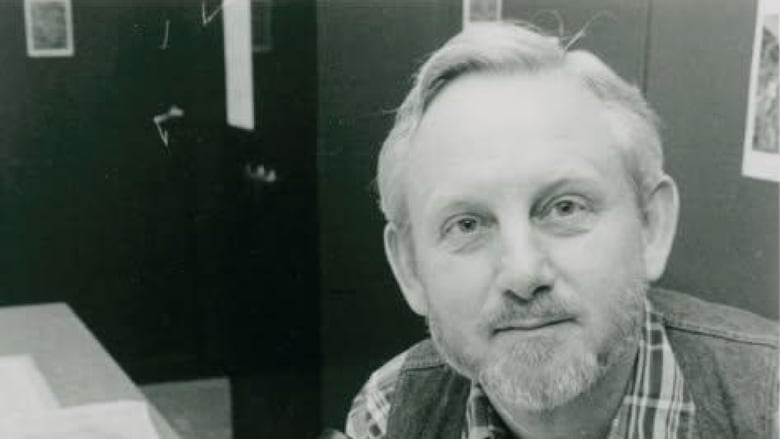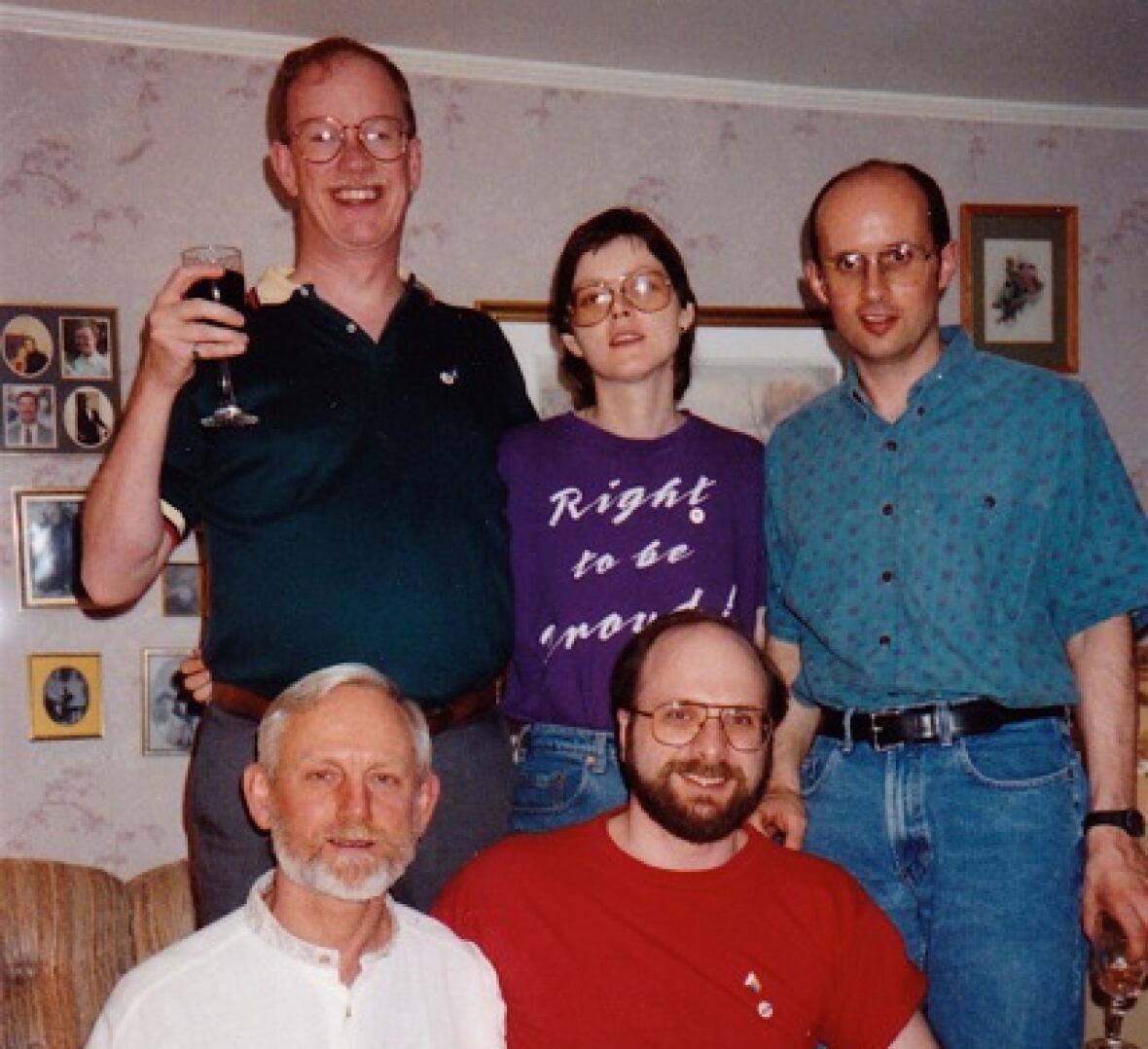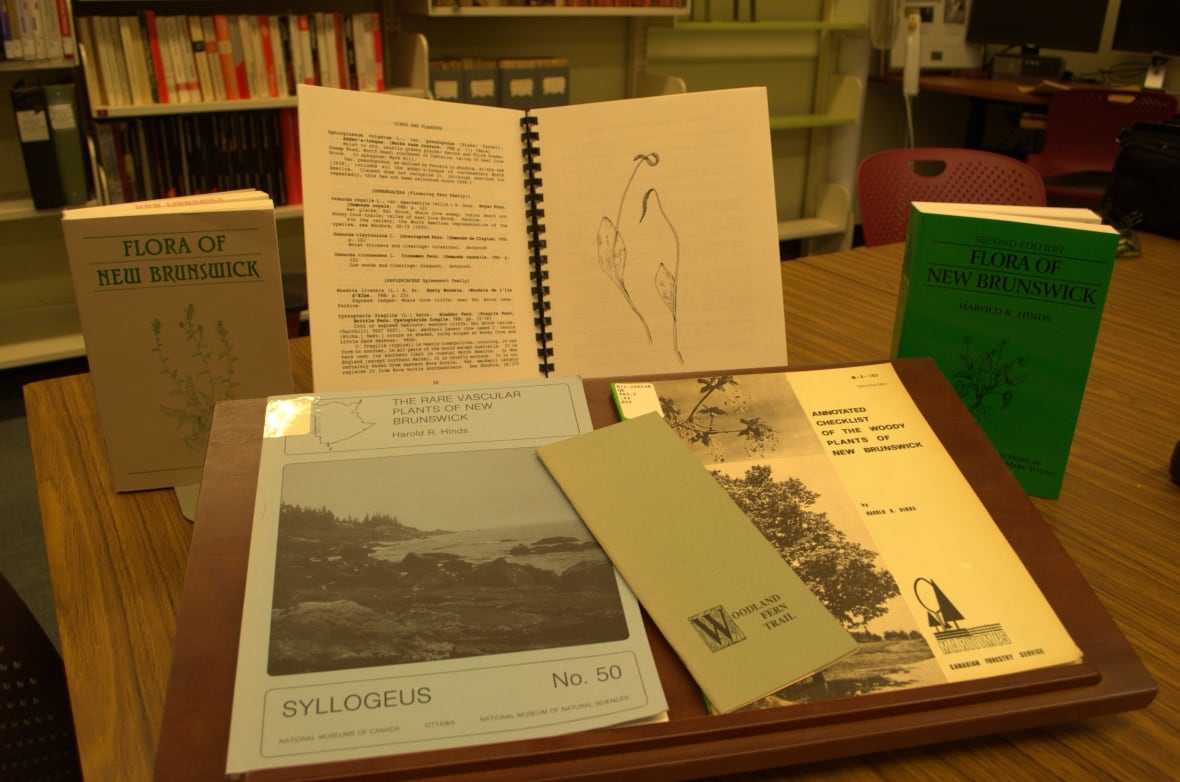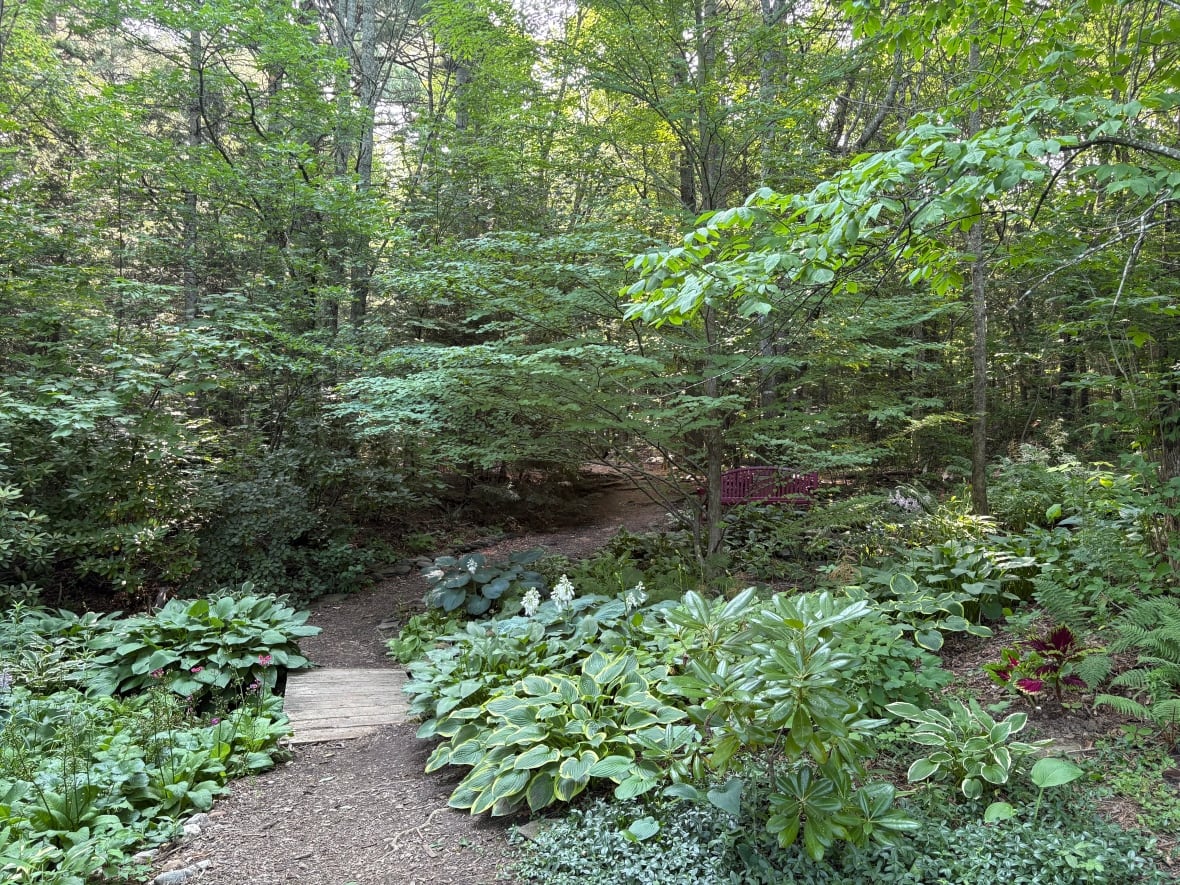Hal Hinds exhibit honours a life of advocacy in Fredericton
Exhibit that opened with Pride Week celebrates botanist, teacher, writer, naturalist and gay rights activist

If you don't know the name Hal Hinds, a new exhibit at the Fredericton Region Museum will probably make you wonder how he's gone under the radar for so long.
The exhibit, A Tribute to Hal Hinds — Botanist, Teacher, Gay Activist, Naturalist and Author, was launched last weekend to coincide with the start of Pride Week in the capital.
Many who attended the opening, remembered Hinds as a teacher or curator of the Connell Herbarium at the University of New Brunswick, said Meredith Batt, who put together the display and gave a talk at the launch.
But he was also a pioneer of the local 2SLGBTQ+ community, said Batt, who co-founded the Queer Heritage Initiative of New Brunswick.
Hinds spearheaded Fredericton Lesbians and Gays, an organization formed in 1979. He served as its first president and operated a coming-out help line from his home.
He also co-founded AIDS New Brunswick and led the fight to enshrine protection from discrimination on the basis of sexual orientation in the province's human rights legislation, said Jim Goltz, his friend and fellow activist and naturalist.

In the mid-1980s, there was no legal protection for members of the queer community from discrimination, Goltz said.
"Anyone could be fired just because of their sexual orientation."
"There were a lot of people who were very, very closeted and secretive about their lifestyle. There was just so much danger to revealing who you were."
There was also "incredible danger of physical violence," he said, because that's how some people reacted to something they didn't understand.
Goltz and Hinds promoted a more scientific approach.
"Anything that is new to me, I just want to find out more about it," he said. "Then, once you do, then you can be more comfortable with it. But some people just react violently because of stigma and social pressure. And certainly traditional religions did not help with that."
There were many things that needed to be done, Goltz said.
The two men, together with nurses Grace Getty and Anne Rowe, started AIDS New Brunswick in 1986.
At the time, the disease now known as various manifestations of HIV infection, was spreading, and "there was a lot of anxiety, ignorance, denial and stupidity," Goltz said.
That's what he and Hinds mused that the acronym AIDS must stand for.
Every other province besides New Brunswick and P.E.I. already had an AIDS organization.
They applied for funding and were shocked when they got it, he said.
Advocating for those who needed support became second job.
Goltz is sad there's still a need for AIDS N.B., but he's glad the group exists to answer the call.
"That organization has had a huge impact … with harm reduction and helping those who are living with HIV/AIDS," said Batt.
"These organizations and their legacy are really important for people to learn about. Understanding where we've come from will help us figure out where we're going."

Hinds had a mantra that Batt also finds instructive: "Learn them, love them, protect them."
"I think that applies to plants and humans alike. And that's a really important message that we need right now," they said.
Hinds was a consummate gardener and he used the same care in tending to his community, agreed Goltz.
"You plant seeds, nurture them and watch them grow."
On the botany side, Hinds helped establish the Nature Trust of New Brunswick, the Conservation Council of New Brunswick, the New Brunswick Federation of Naturalists, the New Brunswick Protected Areas Coalition and the Fredericton Botanic Garden Association.
He used to lead great mushroom walks, did a lot of experiments with plants and gathered a wealth of knowledge about local plant life, said Batt, some of which he had published in books including The Flora of New Brunswick.
A group of Hinds's friends built a garden in his memory. It's tucked in behind the New Brunswick writers' garden.
They planted ferns, wildflowers and primroses, which were Hinds's favourite, and — much to everyone's surprise — have flourished into a cascade, Goltz said.

It's a peaceful spot where you can sit on a bench to read, catch a glimpse of a hummingbird in the hostas or hear the hoot of a barred owl, a call that Hinds could mimic well, noted Goltz.
Visits to the garden also call to his mind excursions where he and Hinds rediscovered plant specimens that hadn't been documented in the province in 100 years.
Goltz hopes Hinds will be remembered for his passion for nature and stewardship and his passion for friends, family and the community.
Batt is hoping an interpretive panel will be installed in the memorial garden in 2026, which will mark 40 years since the founding of AIDS N.B. and 25 years since Hinds's death in 2001 from an HIV-related illness.
They are still looking for the money to do it.

